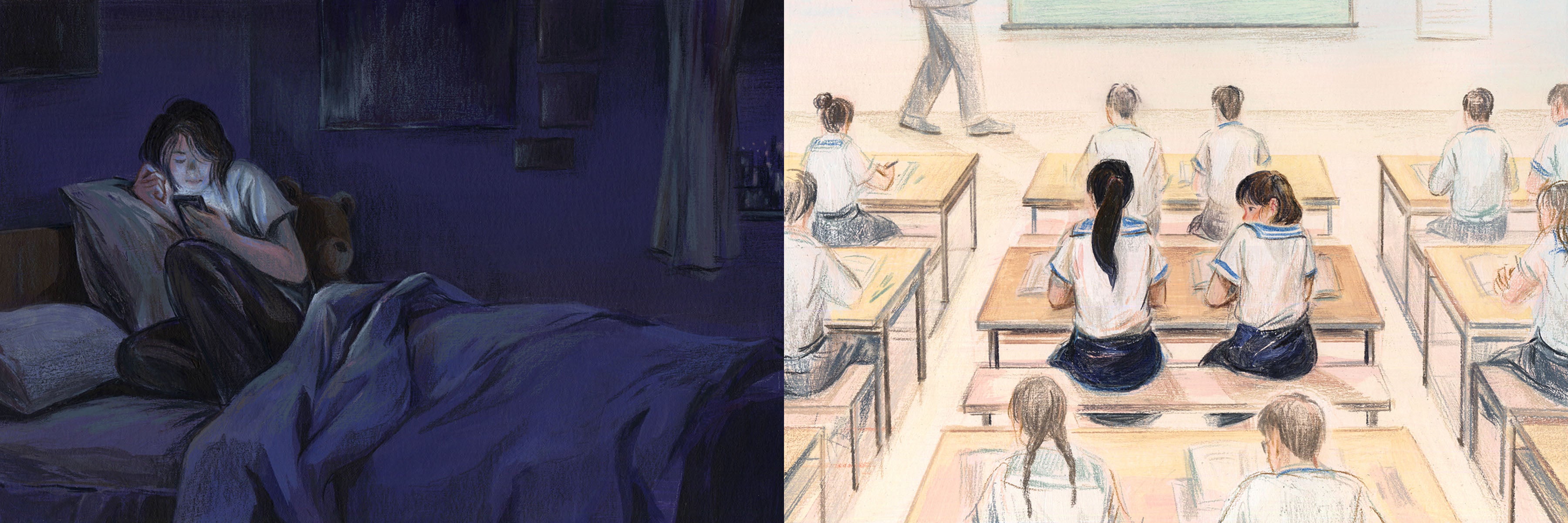"My Teacher Told Me I had a Disease" LGBT School Children in Vietnam

(Bangkok) – Pervasive myths about sexual orientation and gender identity in Vietnam contribute to violence and discrimination which is felt strongly among lesbian, gay, bisexual, and transgender (LGBT) youth, Human Rights Watch said in a report released today.
The 65-page report, “‘My Teacher Said I Had a Disease’: Barriers to the Right to Education for LGBT Youth in Vietnam,” documents how LGBT youth in Vietnam face stigma and discrimination at home and at school over myths such as the false belief that same-sex attraction is a diagnosable, treatable, and curable mental health condition. Many experience verbal harassment and bullying, which in some cases leads to physical violence. Teachers are often untrained and ill-equipped to handle cases of anti-LGBT discrimination, and their lessons frequently uphold the widespread myth in Vietnam that same-sex attraction is a disease, Human Rights Watch found. The government of Vietnam should fulfill its pledges to protect the rights of LGBT people.

Report
“My Teacher Said I Had a Disease”
Barriers to the Right to Education for LGBT Youth in Vietnam
“The government of Vietnam has indicated support for the rights of LGBT people in recent years, but the tangible policy change has lagged,” said Graeme Reid, LGBT rights director at Human Rights Watch. “LGBT youth are especially vulnerable due to inadequate legal protection and widespread misinformation about sexual orientation and gender identity.”
The report is based on in-depth interviews with 52 LGBT youth as well as teachers and other school staff in Vietnam. It analyzes existing government policy and planning documents and pledges the Vietnamese government has made to improve the situation of LGBT people.
Inaccurate information about sexual orientation and gender identity is pervasive in Vietnam and has a particularly harsh impact on youth. While Vietnam has several laws that prohibit discrimination and uphold the right to education for all children, the current national curriculum and sex education policy fall short of international standards and do not include mandatory discussion of sexual orientation and gender identity. While some teachers and schools take it upon themselves to include such lessons, the lack of national-level inclusion leaves the majority of students in Vietnam without the basic facts about sexual orientation and gender identity, Human Rights Watch found.

Thuong, 23
When Thuong was a teenager, she wondered why she felt attracted to other girls. She searched for information online, asking “why does a girl like another girl?” and found a website that said it was possible for boys to love boys and girls to love girls. She was relieved. Then in college, she told another girl for the first time that she liked her. The girl told their classmates what Thuong had said, and they started telling Thuong she was “sick.”
© 2020 Sally Deng for Human Rights Watch
“I’ve never been taught about LGBT,” Tuyen, a 20-year-old bisexual woman, told Human Rights Watch. “There are very few people who think that this is normal.” A school counselor said “There’s a lot of pressure on kids to be straight. It’s constantly referenced that being attracted to someone of the same sex is something that can and should be changed and fixed.”
In a promising step in 2019, the education ministry, with the assistance of United Nations agencies, produced guidelines for an LGBT-inclusive comprehensive sexuality education curriculum, but such a curriculum it has not yet been created.
Human Rights Watch found that verbal harassment of LGBT students is common in Vietnamese schools. Students in various types of schools – rural and urban, public and private – said that students and teachers commonly use derogatory words to refer to LGBT people, sometimes targeted directly at them and coupled with threats of violence.
Other studies, including research by UN agencies and Vietnamese groups, have included similar evidence. In a 2014 report, the UN Development Programme (UNDP) noted: “[E]ducation institutions are not safe for LGBT students due to the lack of anti-bullying and non-discrimination policies. Furthermore, sex and sexual orientation and gender identity education is still limited in Viet Nam and are considered sensitive topics that teachers usually avoid.”
While it appears to be less common, some LGBT youth report physical violence as well. “[The bullying] was mostly verbal but there was one time when I was beaten up by five or six guys in eighth grade just because they didn’t like how I looked,” one person interviewed said.
In cases of both verbal and physical abuse, the school staff responds inconsistently. The majority of the LGBT youth interviewed who had experienced bullying at school said they did not feel comfortable reporting the incidents. This was sometimes because of overt, prejudiced behavior by the staff. In other cases, students assumed that it was unsafe to turn to the adults around them for help.
Even in cases in which students did not face verbal or physical abuse, many reported that their families, peers, and teachers implicitly and explicitly alienate and exclude them. This occurs in classrooms, where teachers refer to anything other than procreative heterosexual relationships as “unnatural,” as well as at home, where parents threaten their children with violence, expulsion, or medical treatment if they are gay or lesbian.
In 2016, while serving on the UN Human Rights Council, Vietnam voted in favor of a resolution on protection against violence and discrimination on the basis of sexual orientation and gender identity, saying “The reason for Vietnam’s yes vote lay in changes both in domestic as well as international policy with respect to LGBT rights.” Other governments in Asia have recently changed their policies to include and protect LGBT youth, including Japan, Cambodia, and the Philippines.
“The government’s stated alignment with a global shift toward respecting the rights of LGBT people signals some political will to make much-needed law and policy changes,” Reid said. “Protecting young people from violence and discrimination and ensuring their education is based in fact instead of prejudice is an important first step.”
Comments